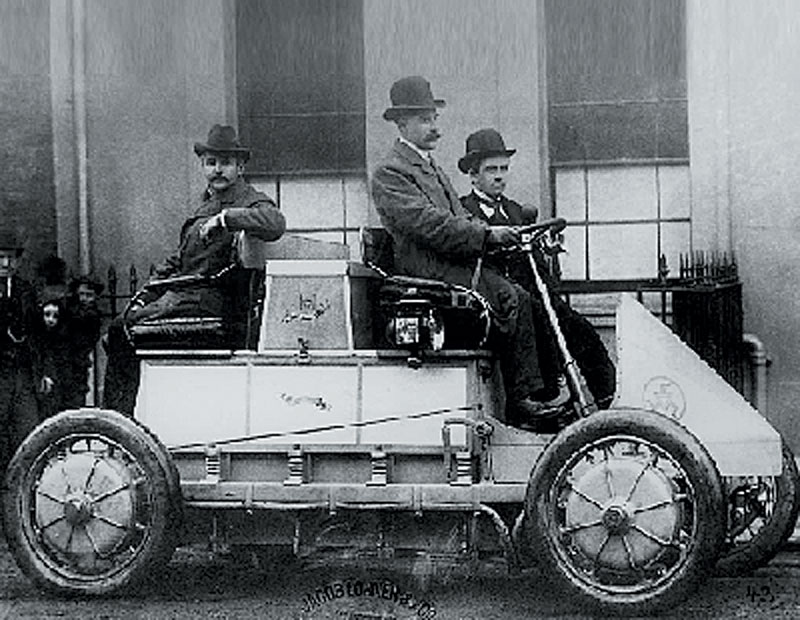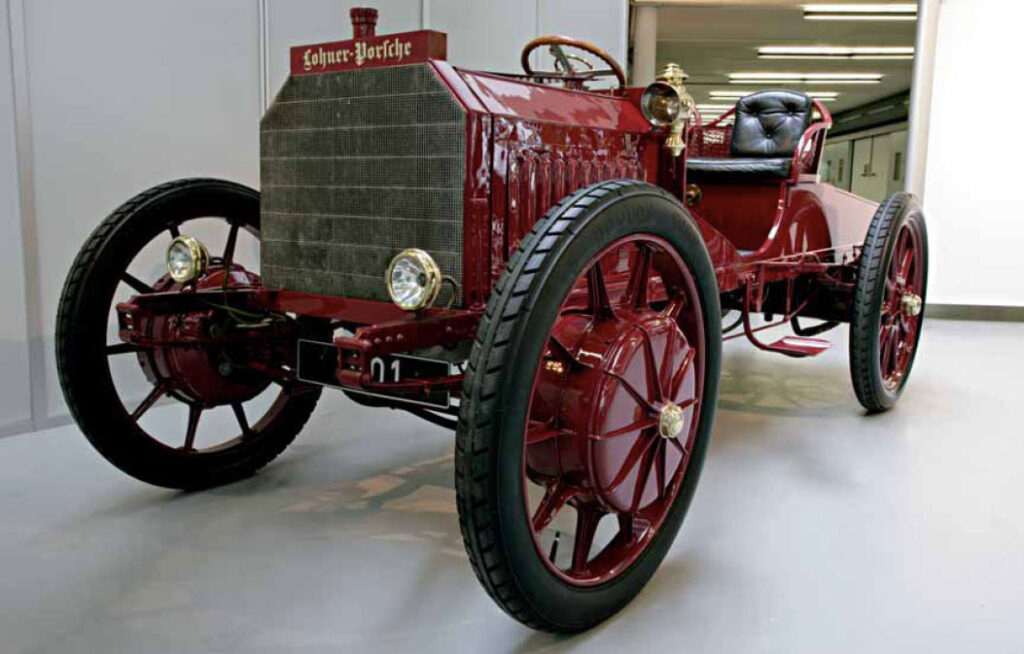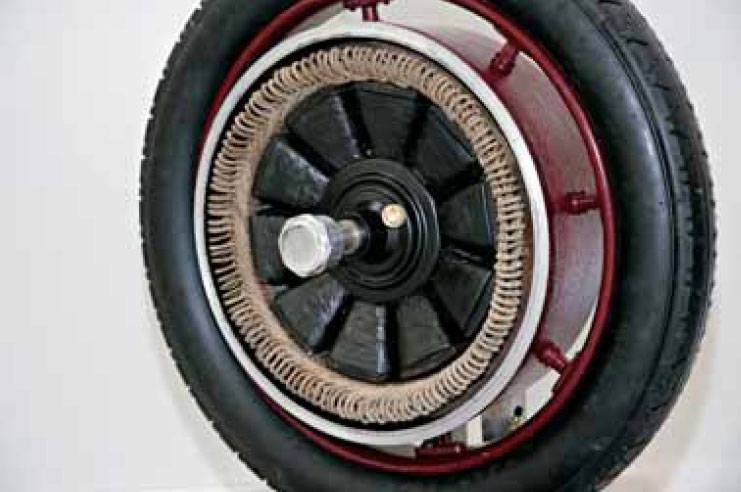The first hybrid car.
In 1898, Porsche joined the Vienna-based factory Jakob Lohner & Co, that produced coaches for Emperor Franz Joseph I of Austria, as well as for the kings of Norway, Sweden, and Romania. Jakob Lohner had begun construction of automobiles in 1896 under Ludwig Lohner in the trans-Danubian suburb of Floridsdorf.
Their first design, unveiled in 1898, was the “System Lohner-Porsche”, a carriage-like car driven by two electric motors, directly fitted to the front wheels, and powered by batteries.

This drive train construction was easily expanded to four-wheel drive, by simply mounting two more electric motors to the rear wheels as well, and indeed such a specimen was ordered by the Englishman E. W. Hart in 1900.
In December of that year, the car was presented at the Paris World Exhibition under the name Toujours-Contente. Even though this one-off vehicle had been commissioned for the purposes of racing and record-breaking, the 1,800 kg of lead acid batteries it required graphically illustrated the limits of this powertrain concept.
Although it “showed wonderful speed when it was allowed to sprint”, the weight of its huge battery pack meant that it was singularly reluctant to climb hills.
Still employed by Lohner, Porsche reached the logical conclusion and in 1901 introduced the “Mixte” vehicle/transmission concept: instead of a massive battery-pack, an internal combustion engine was fitted to a generator to drive the electric hub motors and (for vehicle reliability) a small battery pack.
This way Porsche had created the first petroleum electric hybrid vehicle on record, although since sufficiently reliable gears and couplings weren’t available at the time, he chose to make it a series-hybrid, an arrangement currently more common in diesel-electric or turbo-electric railway locomotives than automobiles.
Although over 300 of the Lohner-Porsche chassis were sold until 1906, most of them were two-wheel drive—either front- or rear-wheel driven trucks, buses and fire-engines. No further four-wheel-drive passenger cars were manufactured, however some buses were fitted with it.
The up to 56 km/h (35 mph) fast carriages broke several Austrian speed records, and also won the Exelberg Rally in 1901 with Porsche himself piloting a front-wheel drive hybrid specimen. It was later upgraded with more powerful engines from Daimler and Panhard, which proved to be enough to post more speed records. In 1905, Porsche was recognized with the Poetting prize as Austria’s most outstanding automotive engineer.
In 1902, he was drafted into military service. He served as a chauffeur to Archduke Franz Ferdinand of Austria, the crown prince of Austria whose assassination sparked World War I a mere decade later.
(source: Wikipedia)

